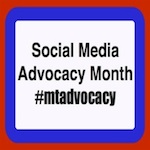This post relates to a very basic part of what we consider to be “advocacy”. It is yet another response to that question we always get: So what do you do? We have all rehearsed little elevator pitches and definitions. My approach to answering this question changed a bit over the course of last year, and I hope it will spark some ideas in others.
Whereas I used to launch into a mini-lecture involving several buzz words (goals, objectives, non-musical, outcomes, research-based, blah blah blah…), I now say, “Do you have a minute for a story?”
Everyone likes stories. It’s what we fill our lives with. Movies, television, books, even songs tell stories. People get excited for them. And stories work. They tug on the heartstrings. They are as effective at the grassroots level of advocacy as they are in an address to Congress. There are high-profile stories, such as Gabby Giffords’ road to recovery, and there are the stories you create every day as a music therapist. I find myself briefly referencing high-profile stories, but talking more about what I have actually experienced.
I generally keep a few stories in mind that really illustrate the benefits of music therapy. Instead of saying, “Music therapy addresses physical, emotional, social, and communicative needs”, I try to have a story that demonstrates each of those. It is even better when you know a little about the person with whom you are speaking so that you can tailor your stories and definitions to his or her own personal experiences.
One story I always tell is that of Charlie (name changed for confidentiality). He was a hospice client of mine, and he had been physically disabled because of a stroke for at least 8 years. He was a bluegrass musician when he was younger. Before receiving music therapy, he struggled with depression. His caretaker was ill herself, and his support dwindled. Music therapy sessions consisted of him singing along with tons of songs, even teaching me new ones on a regular basis. We were able to make a recording, which his family really valued. One day, his grandson (also a musician) and great-grandchildren showed up during a session. It turned into a beautiful sing-along jam session filled with smiles and a few tears.
This is an abbreviated version, but it is still a touching story. It can also be broken down into specific parts. His physical needs were addressed because engaging in music resulted in pain reduction. The enjoyment and affirmation of his identity met his emotional needs, and the family components met social needs. He was able to communicate more clearly after singing. And all of this was facilitated through music. People get excited about that.
So, what stories are (or will become) part of your explanation of your profession?

This post couldn’t have come at a better time. I have been pondering lately how I can change my “elevator speech” to really grasp people’s attention–and even my family’s attention–to what music therapists do. I have just the story in mind. Great post!
Great post-you are so right! There are many times I get that “I am confused by what you said but I don’t want you to know it so I’ll nod my head” look. That is always a good time for a story and boy we all have lots of great stories to share. And typically after a great story they will want to learn more.
Thanks for the comments, Rachel and Debi!
Hey Matt,
I enjoyed your post! I have been in clinical practice for many years – I have so many stories, and yet I still give the “same old” definition of music therapy. Yet it is the stories that need to be told. Thanks for the excellent suggestion!
Great post Matt. It is so easy to get into a pattern of using too much jargon that the audience is just left confused. I do so often have that feeling of ” defending” our profession instead of being a better advocate. It’s always helpful though when you have a truly iinterested person.